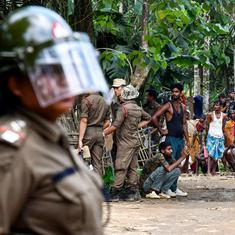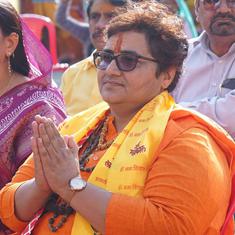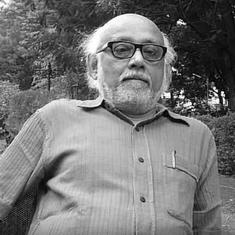While presenting the budget in the assembly recently, Rajasthan Chief Minister Vasundhara Raje said the effect of a central government decision to cut or end funding for many social-sector programmes would be felt.
That, however, is not stopping one of India’s most socially backward states from increasing spending to boost the economy and make people healthier, wealthier and better educated.
This is what outlays look like in some core sectors:
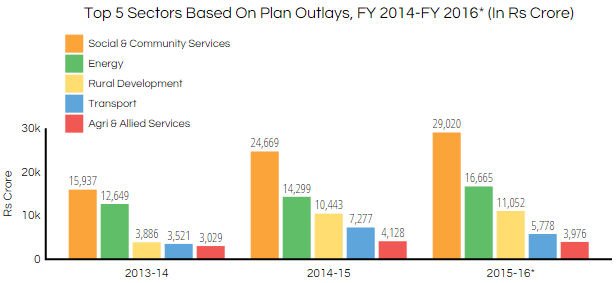
Source: Rajasthan Budget; * Budget Estimates
The money allocated for transport has declined 21%, to Rs 5,778 crore from Rs 7,277 crore in 2014-15.
Agriculture and allied services are also seeing a drop in outlay, from Rs 4,128 crore to Rs 3,976 crore, down 4%.
Social & community services will see the maximum increase of 18%, from Rs 24,669 crore to Rs 29,020 crore. The allocations here include Rs 8,912 crore for education, Rs 6,063 crore for the health sector and Rs 4,674 crore for water supply schemes.
The energy sector is likely to see a 16% increase in spending at Rs 16,665 crore from Rs 14,298 crore.
Higher outlays may not mean the money will actually be spent, if past, lethargic spending patterns are any indication. Here’s a look:
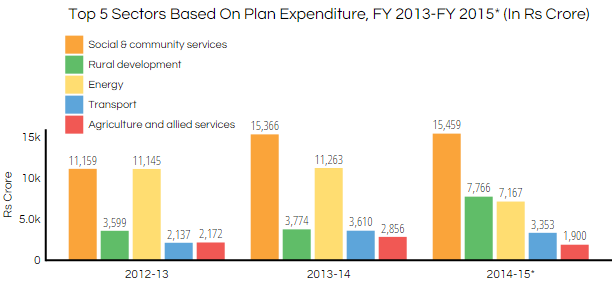
Source: Rajasthan Budget; * till January 2015
Against an allocation of Rs 14,298.58 crore, the government spent only Rs 7,167.43 crore on energy till January 2015; in other words, it spend no more than 50% of the money available.
Only 62% of the Rs 24,669 crore for social and community services was spent, or no more than Rs 15,460 crore.
And so, on to a surplus budget
With so much money unutilised, it is perhaps not a surprise that the chief minister presented a Rs 5,56.81 crore revenue-surplus budget for the year 2015-16, against a deficit budget of Rs 4,219.60 crore in 2014-15.
Scindia also said that capital expenditure has been increased 40% in 2014-15 from 2013-14, and debt has been utilised to create assets.
Capital expenditure increased to Rs 19,152.74 crore in 2014-15 from Rs 13,664.66 crore in 2013-14 and revenue expenditure increased to Rs 100,887.93 crore from Rs 75,509.58 crore, up 33%.
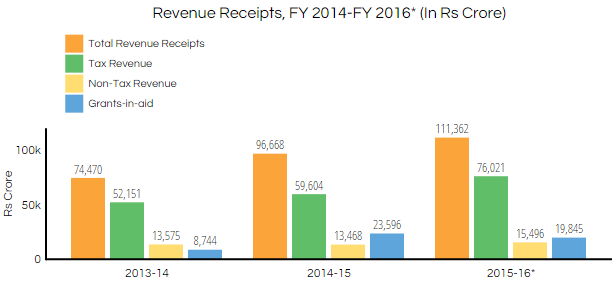
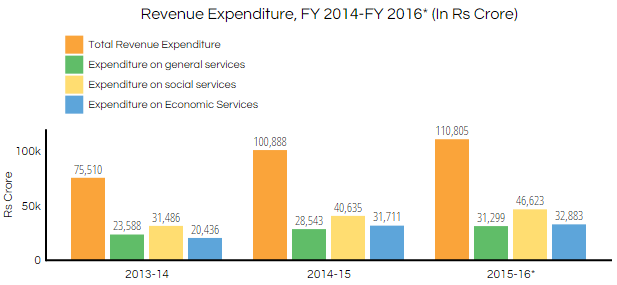
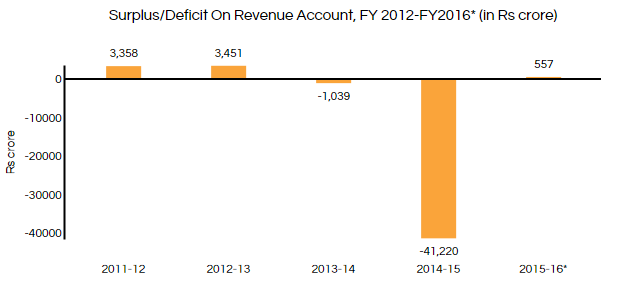
Source: Rajasthan Budget; *2014-15 figures are revised estimates and 2015-16 figures are budget estimates
Total tax revenue (state’s own tax revenue including land revenue and state excise and share of central taxes like income tax and service tax) is expected to increase 27% to Rs 76,020 crore, from Rs 59,604 crore.
Grants-in-aid from the central government – to cover revenue deficit, disaster relief and sector-specific schemes – are expected to decline 16% to Rs 19,844 crore from Rs 23,595 crore.
Expenditure on social services is likely to increase 15% from Rs 40,634 crore to Rs 46,622 crore. Given Rajasthan’s low social-sector indices, such spending is expected.
Rajasthan, which has a population of 68 million, is behind the national average on all social indicators like education, health and sex ratio. While the literary rate is 66% against the national rate of 73%, sex ratio (females per 1,000 males) is 928 as against the national average of 943.
Infant mortality rate, an estimate of infant deaths for every 1,000 live births, is 47 as against the national average of 40.
Maternal mortality ratio, the number of women aged 15-49 dying due to maternal causes per 100,000 live births, is 224 in Rajasthan as against the national average of 167.
This article was originally published on IndiaSpend.com, a data-driven and public-interest journalism non-profit.


